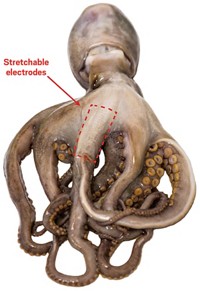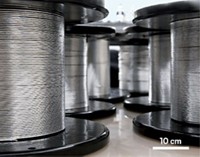Advertisement
Grab your lab coat. Let's get started
Welcome!
Welcome!
Create an account below to get 6 C&EN articles per month, receive newsletters and more - all free.
It seems this is your first time logging in online. Please enter the following information to continue.
As an ACS member you automatically get access to this site. All we need is few more details to create your reading experience.
Not you? Sign in with a different account.
Not you? Sign in with a different account.
ERROR 1
ERROR 1
ERROR 2
ERROR 2
ERROR 2
ERROR 2
ERROR 2
Password and Confirm password must match.
If you have an ACS member number, please enter it here so we can link this account to your membership. (optional)
ERROR 2
ACS values your privacy. By submitting your information, you are gaining access to C&EN and subscribing to our weekly newsletter. We use the information you provide to make your reading experience better, and we will never sell your data to third party members.
Energy Storage
Structural batteries lighten drones’ loads
A bioinspired electrolyte material enables tough zinc-ion batteries
by Katherine Bourzac
January 14, 2019
| A version of this story appeared in
Volume 97, Issue 2

Inspired by the structure and composition of cartilage, chemists have made a tough, conductive electrolyte and used it to build batteries durable enough to serve as structural materials (ACS Nano 2019, DOI: 10.1021/acsnano.8b05068). When they replaced part of a drone’s casing with the battery, which is based on zinc-ion chemistry, its flight time was extended by 25%. It’s difficult to make materials that are both conductive and tough, but biology has found solutions, says University of Michigan chemical engineer Nicholas A. Kotov. Cartilage, for instance, is made up of tough nanofibers of collagen protein in a gooey, ionically conductive carbohydrate gel. To make a tough, flexible battery electrolyte that’s also highly conductive to zinc ions, Kotov’s group mimicked the structure of cartilage, using tough aramid nanofibers mixed with squishy poly(ethyleneoxide), which excels at conducting zinc ions. Batteries made with this new solid electrolyte are flexible and very tough, which prevents performance-killing dendrites. And they can withstand plastic deformation, which means it’s possible to mold them into various shapes, such as casings for drones, and stamp them with corrugated patterns to make the batteries even more durable. Replacing structural parts with batteries could help make drones and other vehicles lighter, which would enable longer travel times and heavier cargoes, Kotov says. He’s currently working on improving the batteries’ energy density so that they can replace, not just augment, traditional batteries.





Join the conversation
Contact the reporter
Submit a Letter to the Editor for publication
Engage with us on Twitter